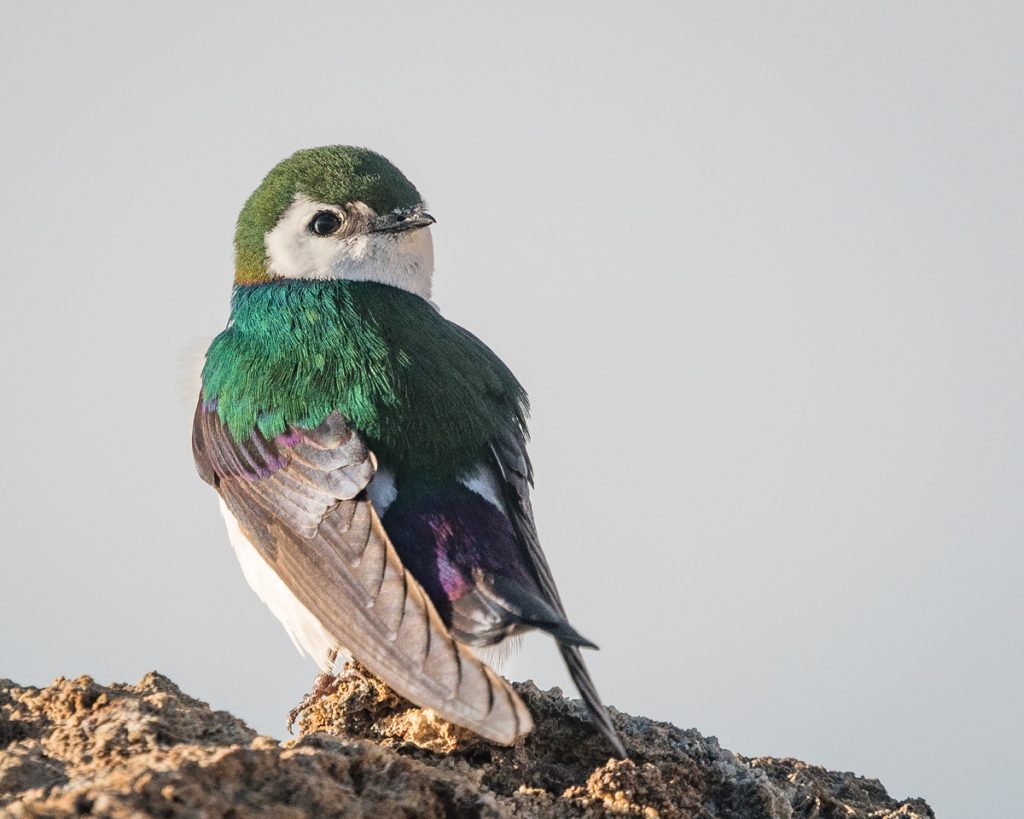
Yep, despite summer being far from over, several species have already begun their journey to Central America. During this migration season, there are opportunities to see a rainbow of different birds not commonly seen in northern New Mexico year-round, as well as chances to help them on their way by providing bird feeders and limiting outdoor light use.
A quick primer on bird migration: Birds migrate primarily for resources and nesting locations, but the trigger for migration is hormonal. As winter approaches and sunlight decreases day by day, their hormones tell them it’s time to get a move on. There’s a word for this, “Zugunruhe,” German for restless migratory anxiety. Migratory birds begin to feel restless and will stock up on food to build fat reserves for the coming journey to the monsoon lands of Mexico, where insects and fruit are abundant. While our trees have begun to lose their leaves, the lush foliage and dense forests of Central America will provide ample nesting spots. A species’s tolerance of high and low temperatures also plays a role in migration, and while many birds can survive even freezing temperatures, the amount of food required to do so is not sustainable.
Birds follow ancestral paths known as “Flyways.” Think of them as the avian equivalent of a super highway- used by birds large and small because they’re relatively safe from predators and supply food along the way. New Mexico is considered part of the Central Flyway, and birds’ migratory paths take them over rivers like the Rio Grande and through mountain chains, the same routes used by early human settlers in our state. This route isn’t pre-programmed into bird’s instincts, however. Scientists still don’t understand the full complexity of how birds navigate, but what is known is they use a combination of techniques: using the sun and stars as compass guidance, sensing the Earth’s magnetic field, and tracking landmarks they passed on their earlier journeys.
Unfortunately, modern human development has made this already difficult journey even more perilous. Powerlines and buildings are the leading cause of bird deaths from collisions, and light pollution can confuse birds and take them off course. Some of these birds are killed by poachers, a sick cycle wherein their plumage becomes increasingly valuable as the species becomes more and more rare with each bird that’s killed until they’re extinct and exist only as taxidermied replicas sitting in a museum.
You can help migratory birds with a few simple actions. Over half a billion birds are killed from residential window collisions each year but preventing this is easy. Decals like bird silhouettes or circles, sticky notes, or white tape are all effective. Prayer flags are especially effective. The key is spacing; birds see spaces instead of patterns, and by keeping the space between each decal or line of tape to 2” it will appear too small a gap for birds to fly through. This can be an artistic endeavor too, as non-toxic tempera paint works great and can be easily removed. You can even use a bar of soap to draw a pattern if paint isn’t your strong suit.
Window screens are another solution that double as mosquito and fly prevention during hot summer months, and if your screens don’t cover the whole window there are specially made bird screens that work just as well. Turning off outdoor lights around sunset is another easy way to help as this will prevent birds from getting distracted and falling off course. And of course, just putting out bird feeders and suet feeders will provide birds the sustenance they need for the flight ahead.
I encourage readers to use the Cornell Lab’s handy migration tracking tool BirdCast to track nightly movements of birds, see real-time analysis of their movements, and much more, including what birds will be migrating near you. You can access this free service at Birdcast.info. You can submit your own bird sightings at eBird.org/sightings.
Here’s to another migration season and the chance to see some new feathered beauties!
Author
-

Bryce Flanagan moved from Sacramento, CA to Taos County in 2016, and has lived in Questa for two years. He's passionate about the unique and beautiful wildlife of our state and is a regular contributor to the Questa Del Rio News.
View all posts


